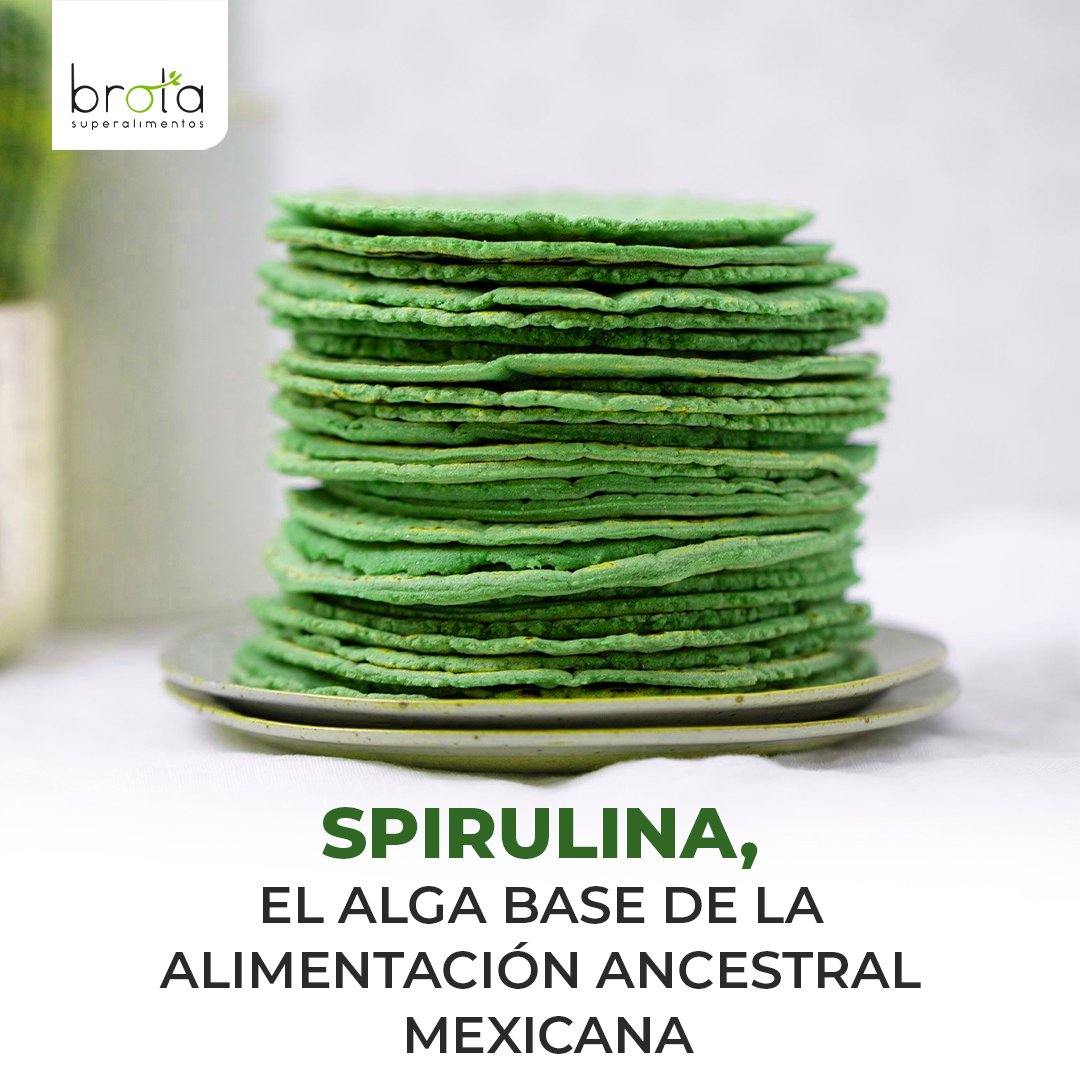
Spirulina: the microalgae basis of the ancestral Mexican diet
Share
Since prehistoric times, seaweed has been used as food in the culinary traditions of many countries, mainly in Asia and to a lesser extent in Latin America.
The Mayan culture of the Yucatan Peninsula, which settled in the middle of the jungle, whose conditions were not suitable for agriculture, developed microalgae farms. Managing to sustain a population of two million inhabitants despite the adverse conditions for obtaining food.
The Mayan tribes used these microalgae in foods such as breads and soups and made them part of their daily diet. The Mayans referred to this diet as recommended for a healthy life.
For their part, the Aztecs sustained themselves thanks to a complete and balanced diet that included spirulina , which they called tecuitlatl, a Nahuatl word that translates as "rock excrement." Many historians suggest that the consumption of this seaweed was what made the growth of the Aztec population possible.
The first record of the consumption of spirulina as food for humans comes from Bernal Díaz del Castillo, one of the companions of Hernán Cortés' troops, who reported in 1521 that spirulina was harvested from the waters of Lake Texcoco. which they dried and sold in the Tenochtitlán market.
The Mexicas, descendants of the Aztecs, harvested the protein-rich food from the surface of Lake Texcoco, a vast body of water in central Mexico that was later drained to make way for the construction of Mexico City. There the waters had the perfect balance of salinity and alkalinity for spirulina to flourish.
Oral traditions say that Mexica messengers and runners in ancient Tenochtitlán ate dried spirulina with corn, tortillas, beans, chiles or mole as fuel for long journeys.
The Western world rediscovered the nutritious ingredient in the 1940s, when a French psychologist studying algae noticed that the Kanembu of Lake Chad in Africa were collecting spirulina and turning it into sun-dried breads called dihe.
Because of an accident in the 1960s in Mexico, when the owners of Sosa Texcoco, which produced sodium carbonate and calcium chloride in a large snail-shaped pond in Lake Texcoco, noticed a green substance that they said ruined the job. They approached French researchers, who concluded that it was the same organism that had been feeding the Kanembu for generations.
Instead of trying to eradicate it, Sosa Texcoco recognized its value and encouraged its growth, opening the world's first commercial spirulina company, Spirulina Mexicana.
Spirulina is considered a superfood and currently, due to its high proportion of proteins and the presence of vitamin B12, it has been made a must-have in the diet of both athletes and people who eat a plant-based diet.
For this reason, spirulina is part of the Brota catalog, because it is in line with our objective of making available foods with the highest nutritional and therapeutic concentration. We want to reach all corners of the world, encouraging the population to incorporate superfoods into their daily lives in order to improve their well-being and quality of life.
The Mayan culture of the Yucatan Peninsula, which settled in the middle of the jungle, whose conditions were not suitable for agriculture, developed microalgae farms. Managing to sustain a population of two million inhabitants despite the adverse conditions for obtaining food.
The Mayan tribes used these microalgae in foods such as breads and soups and made them part of their daily diet. The Mayans referred to this diet as recommended for a healthy life.
For their part, the Aztecs sustained themselves thanks to a complete and balanced diet that included spirulina , which they called tecuitlatl, a Nahuatl word that translates as "rock excrement." Many historians suggest that the consumption of this seaweed was what made the growth of the Aztec population possible.
The first record of the consumption of spirulina as food for humans comes from Bernal Díaz del Castillo, one of the companions of Hernán Cortés' troops, who reported in 1521 that spirulina was harvested from the waters of Lake Texcoco. which they dried and sold in the Tenochtitlán market.
The Mexicas, descendants of the Aztecs, harvested the protein-rich food from the surface of Lake Texcoco, a vast body of water in central Mexico that was later drained to make way for the construction of Mexico City. There the waters had the perfect balance of salinity and alkalinity for spirulina to flourish.
Oral traditions say that Mexica messengers and runners in ancient Tenochtitlán ate dried spirulina with corn, tortillas, beans, chiles or mole as fuel for long journeys.
The Western world rediscovered the nutritious ingredient in the 1940s, when a French psychologist studying algae noticed that the Kanembu of Lake Chad in Africa were collecting spirulina and turning it into sun-dried breads called dihe.
Because of an accident in the 1960s in Mexico, when the owners of Sosa Texcoco, which produced sodium carbonate and calcium chloride in a large snail-shaped pond in Lake Texcoco, noticed a green substance that they said ruined the job. They approached French researchers, who concluded that it was the same organism that had been feeding the Kanembu for generations.
Instead of trying to eradicate it, Sosa Texcoco recognized its value and encouraged its growth, opening the world's first commercial spirulina company, Spirulina Mexicana.
Spirulina is considered a superfood and currently, due to its high proportion of proteins and the presence of vitamin B12, it has been made a must-have in the diet of both athletes and people who eat a plant-based diet.
For this reason, spirulina is part of the Brota catalog, because it is in line with our objective of making available foods with the highest nutritional and therapeutic concentration. We want to reach all corners of the world, encouraging the population to incorporate superfoods into their daily lives in order to improve their well-being and quality of life.
